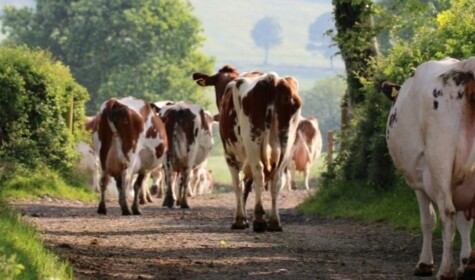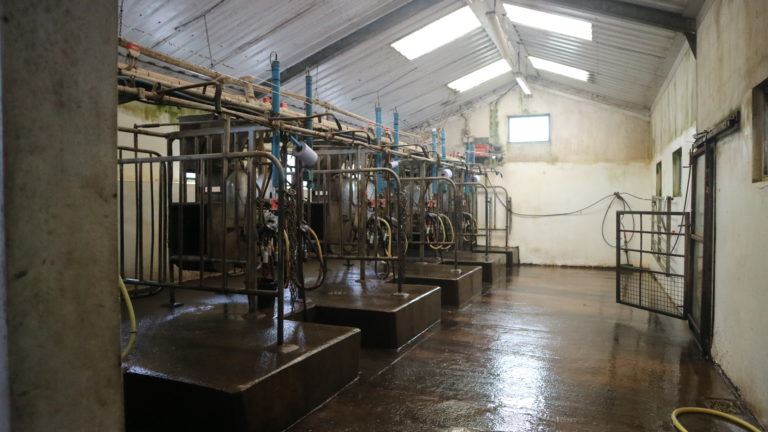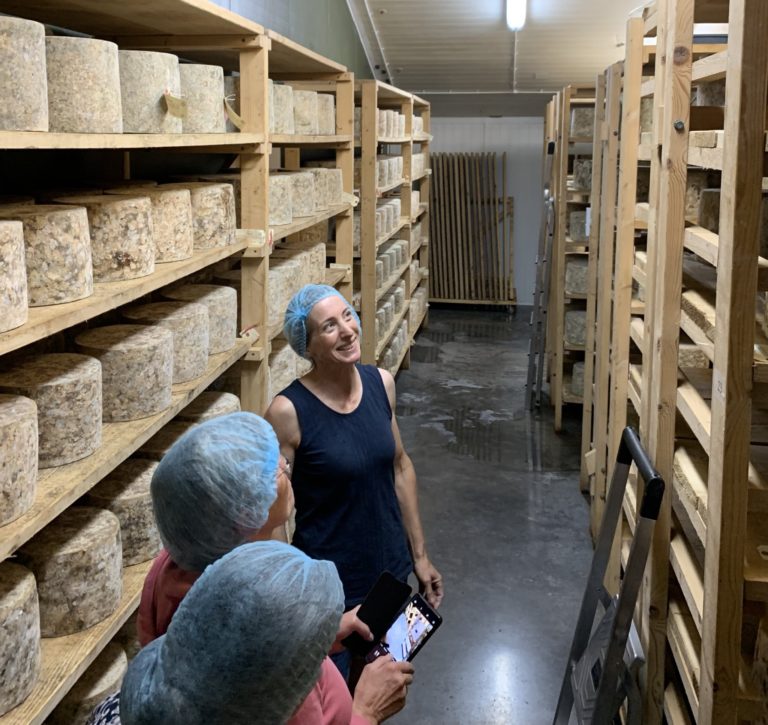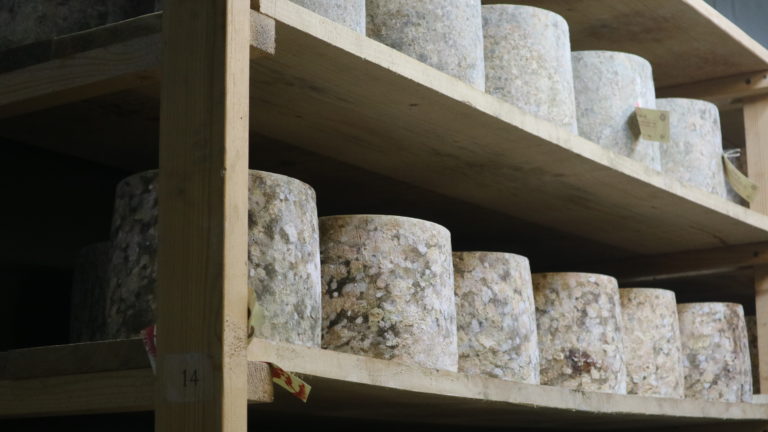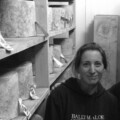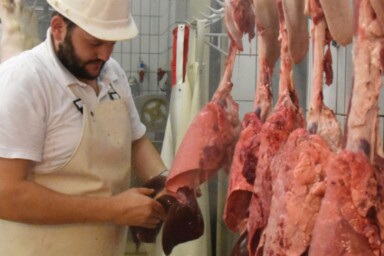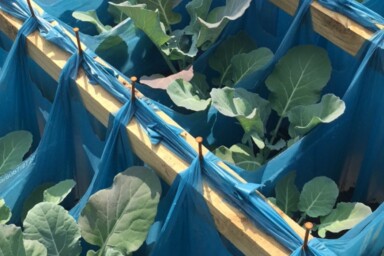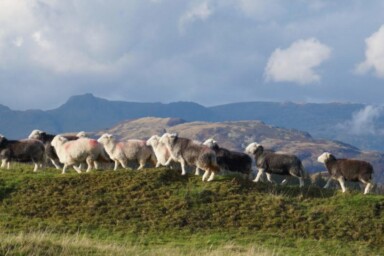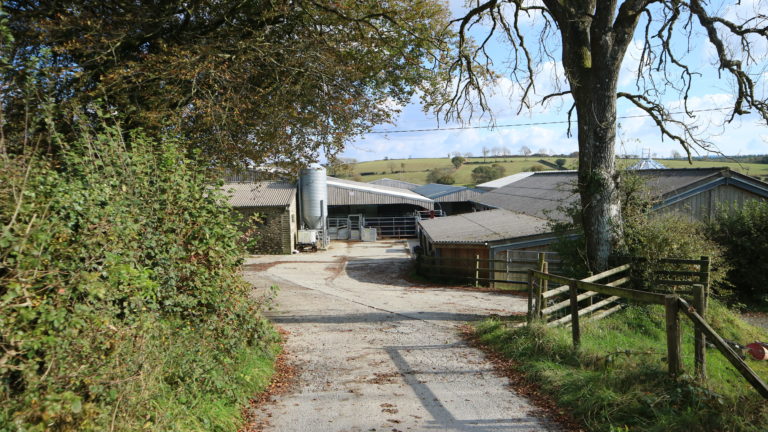
What I learn most at a personal level though, I learn from the cows. We have a (more or less) closed dairy herd on the farm with just the occasional visiting bull, so there is a succession of mothers and daughters with family traits and peculiarities who evolve and adapt with each generation. The nature of dairying and the daily appointment in the milking parlour means that cows are familiarised with the people caring for them and beautiful relationships can be formed. They are above all, though, herd animals and as well as relating to the cows as individuals, people must also make their place in the herd, ideally as a leader as well as a friend. There are dominant cows, leader cows (who aren’t necessarily dominant), shy cows and anxious cows. Grassy Tail and Mrs Bumblesnout (Welsh Black and Hereford Crosses respectively) are fully in charge of the other cows but are thoughtful, gentle and tender with each other. One of my favourites, a young cow called Oats and Peas 2 is a leader but not dominant (always at the front of the moving herd in spite of being young and quite far down the pecking order).
Familiarity and relationships can be forged right from birth and this is where I feel scale helps. We are a small herd of 70-ish milking cows and another 70 or so young stock, and the same handful of people milk and care for the cows and young stock. I definitely invest in those early years, knowing that it will make all the difference later on. I have various sounds, noises and even meaningless words as well as a certain body language that I use with the calves from day one to ensure that they will always be able to recognise and relate to me – hopefully in a good way and even in the dark – as they grow and develop through various milestones, whether it be their first time at grass, when calving or in the milking parlour.
I’ve seen some lovely examples of ‘julning’ (a Swedish way of calling cows across long distances, of which there are different forms in any landscape where cows are grazed and milked) and although my communication doesn’t have julning’s beauty or melodious nature, it does carry over long distances and it is particular to me. I always make sounds to the cows in the parlour too, much preferring that they can hear my very quiet singing rather than playing them music (although they’d possibly prefer that!).
It’s often said that women make good dairy farm workers. I think that the characteristics traditionally attributed to women as primary care givers are essential in dairying, but I’m not sure that points to a gender bias, more a recognition of the gender spectrum that we are all on and an understanding that working on a dairy farm is a caring vocation.
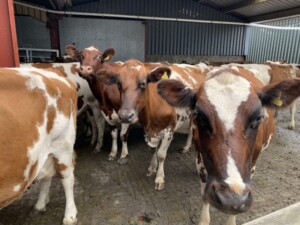
There are times, however, when I have to channel my inner bull, such as at TB testing when we have to ask the whole group to do something unpleasant. Cows are extremely sensitive to unfamiliar sights, smells and sounds and a vet’s arrival brings all three. One of the many things that I appreciate about our herd though is their ability to forgive and to not associate us with events like TB testing. Cows teach us to be aware of our manifestations, they see through our ‘front’ and connect to and engage with our essence, without judging – which is truly affirming.
Many of the simple principles of dairying are relevant to the cheeseroom too: care giving, patience, observation, good attention and quiet confidence. We feel grateful and blessed that both our current cheesemakers also milk and care for the herd. Jos and Jenn are as comfortable in the store full of maturing Hafods as they are in the calf pens. There is a continuous thread of respect for the product, the transformational process, the raw ingredient, the cows, the farming system and the land, which ensures that the cheese is a sensitive representation of this hill and its community – enabling the most direct of connections with the farm for anyone eating our cheese.
We think that our milk is delicious and a whole food in itself, which changes seasonally and daily as the farming year turns and the cows graze the varied pasture, foraging in the hedgerow, bingeing on crab apples or eating the field diversity conserved as forage in the winter. Sensitive cheesemaking can accentuate these daily nuances, and we see that in the store when grading a year’s cheese. There is a band width of flavours in Hafod, which means that no two batches taste the same but each cheese tastes of this farm, its unique ecosystem and the community existing here. The cheese is the result of a myriad of intimate interactions and the cows should never be seen as ‘units of production’ but as the physical and emotional constant that weaves us and this natural and managed landscape together.
